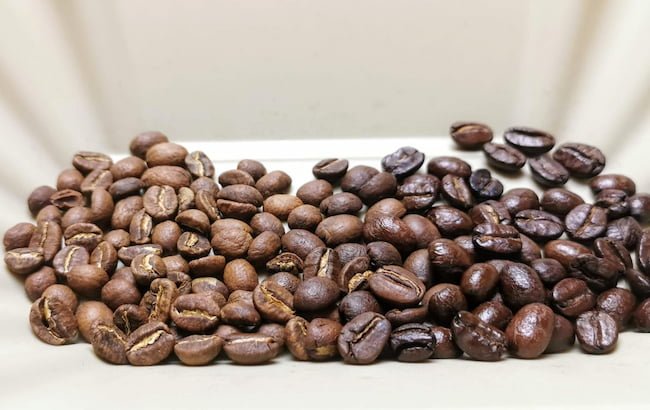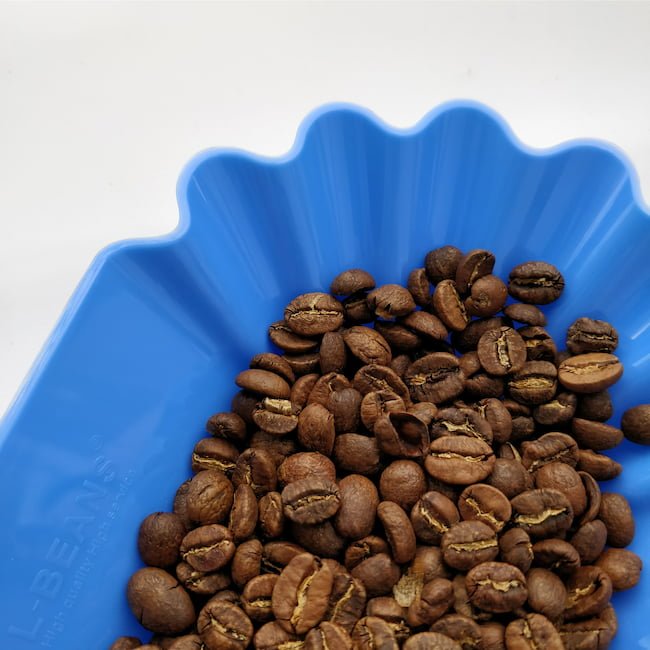Hang around coffee lovers enough, and you’ll hear a discussion on light versus dark roasts.
This usually isn’t trivial, especially for staunch supporters of each roast style.
Neither practitioners nor consumers of each roast style rarely cross over to the other side.
What fosters this kind of devotion, you might ask?
In this article, we’ll explore both roast styles and check what each has to offer.
What Does Roasting Coffee Do?
Before diving into the light and dark roast levels, let’s dig into the process that creates both: roasting.
We can think of roasting as the equivalent of cooking in the coffee industry. It requires heat, air, and movement over a specific length of time.
The task of roasting is to create soluble compounds in the coffee bean that can be extracted (through brewing) and tasted. That’s the essence.
Professional roastmasters can tweak the creation of these compounds with heat and airflow, but they still have to ensure the coffee ends up drinkable.
There’s a actually a pretty wide window here – it’s not that difficult to make the coffee drinkable. Even home roasters can quickly get to this level.
The real art is roasting the coffee so it turns out tasting delicious. Again and again. Consistency is the key to becoming a great roaster.
As coffee beans go through the roasting process, they undergo distinct color and odor changes. Exemptions include aged/monsooned beans and decaffeinated beans whose roast stages are harder to detect.

The different phases of roasting
A roastmaster pays attention to several points during a roast. But each of them falls under the four main stages of a roast cycle:
- Drying. The raw green beans have only entered the roasting machine. The hot environment allows moisture inside the beans to start vaporizing. We’ll see the grayish-green shade of the coffee bean lightening up as it enters the next stage.
- Yellowing. This stage sees the coffee beans move through different shades of yellow: from pale yellow to bright, to tan, to almost a golden hue. The smells during this stage are reminiscent of fields of cut grass and hay. It reminds us that coffee is a plant before taking on the more familiar aromatics of the browning stage.
- Browning. The beans are now noticeably brown. Both the color and smell resemble freshly baked bread. The steady heat application has allowed most moisture to evaporate and has set off many chemical reactions. We’re now approaching the end of the roast cycle.
- Development. The coffee beans develop throughout the roast, but flavor development relies on this stage. This is also where the roastmaster establishes the lightness or darkness of the roast.

We can stop the roast cycle anywhere along the development stage. Doing this will yield different roast levels. There are two important audible milestones here: the first crack and the second crack.
First Crack
As the temperature climbs, the bready, toasty aromas become more candy-like. The pressure builds up inside the beans and is finally released in an event known as the First Crack.
The forceful escape of gases and energy causes a loud popping noise (much like popcorn). The lively popping of coffee beans will continue for a few minutes before it goes silent again.
Upon reaching First Crack, coffee becomes edible. But this isn’t a guarantee of good flavors.
Second Crack
If the coffee beans continue to roast, they’ll enter another round of popping—the Second Crack. The bean structure itself will start fracturing the longer it is subjected to high temperatures. This will be heard as quieter snaps (much like dried twigs).
Bean color changes will quicken. It can become medium brown to brown-black in mere seconds. Oils inside the coffee bean will start surfacing and lend a glossy appearance.
Roast cycles that go this long don’t go beyond the end of Second Crack. Most won’t even let Second Crack finish before stopping the roast.
Read More: How to Brew Coffee According to Roast Level
What’s the Difference Between Light and Dark Roast Coffee?
Light and dark roasts are the two extremes of the roast spectrum. A side-by-side comparison should reveal a striking color difference. They should represent the names they carry: light brown for a light roast and brown-black for a dark roast.
Look closer at light roasts, and you’ll notice a dry bean surface with a rough and marbled texture. The size of the beans will be bigger than its raw green form, although still smaller than a dark or medium bean.
If you try to break a bean open with your fingers, you’ll be met with a slight resistance before it cracks open.
Pro tip: 💡 If you can’t crush the beans with just your fingers, then your coffee was most likely roasted by a bearded hipster.
Dark roasted beans have a smoother texture but appear shiny because of oils coating the surface. It has also expanded further in size compared to its light-roasted counterpart. The bean structure will be very brittle, so breaking one open with your fingertips will be pretty easy.
Flavor Differences Between Light and Dark roast
The differences in flavor between the two are also pretty straightforward.
Light Roast
- Higher acidity and low bitterness
- Sweetness will often not be intense as a medium roast. However, it’s possible to bring out extraordinary sweetness even from light roasts with the proper brewing techniques.
- Mouthfeel can be thin and tea-like
- Showcases the coffee origin characteristics
Dark Roast
- Lower acidity and higher bitterness
- Sweetness is usually mixed in with bitterness
- Mouthfeel can be heavier but will thin out in very dark roasts
- Displays more roast characteristics
This also holds true for roasting low-quality green beans: light roasts will expose bean defects while dark roasts will hide them.
Both can be susceptible to flavor defects brought about by unskillful roasting. But when done well, both also have their own place and use in the coffee market.
Learn More: The difference between Light, Blonde & Medium Roasts
The delicate flavors of light roasts will shine in filter brewing methods and with more modern espresso styles such as allonges and turbo shots, while the richness of dark roasts will be potent as espresso beans. Nel drip and moka pot also tend to work well.
Which Has The Most Caffeine?
People started drinking coffee for the stimulating effects of caffeine. But does longer roasting burn off caffeine?
The answer is no, not really; caffeine will be stable throughout the roast.
This means that whether roasting stopped during 1st crack or 2nd crack, the coffee will still have the same level of caffeine.
Is Light Roast or Dark Roast Coffee Healthier?
Coffee drinkers in it for the health benefits are in luck. Both light and dark roasts offer individual health benefits.
Light roasts
- Contain higher antioxidants that help fight cell damage
- Retain much of coffee’s chlorogenic acids that have anti-inflammatory properties and help protect against diabetes, cancer, and heart problems
Dark roasts
- Boost the levels of the antioxidants Vitamin E and glutathione in our red blood cells
- Helps with weight loss
Conclusion
Light and dark roasts are usually pitted against each other because they’re so different. But there’s enough space in the coffee market for the two to co-exist.
Flavor quality may be objective, but it will always come down to personal preference. Try both roasts and expose your palate to different coffee experiences.
Read More: What is a Full City Roast?
FAQ
Light roast has more origin flavors. That means the brew might not taste anything like a typical cup of coffee. It takes a trained palate to detect specific flavors, but anyone’s tongue will notice the difference.
In the coffee industry, strength simply means concentration and will depend on your brew method and ratio. But if you’re looking for a punchy flavor, the boldness of a dark roast might deliver. Mind you, boldness isn’t necessarily strength.
The acidity will decrease with prolonged roasting. Expect light roasts to be bright and tangy while dark roasts to be smooth and mellow.
It doesn’t have to be that way. You’re likely paying for the bean quality or rarity rather than the roast level. Dark roasting will cost more in production since you “roast” away some of the bean’s weight. However, since the most expensive single-origin coffee is typically light roasted to preserve more of its origin flavor, it’s easy to assume that all light roasts are more expensive.
